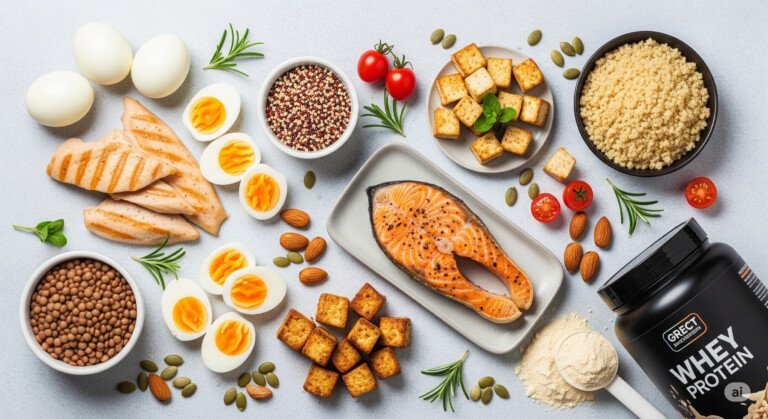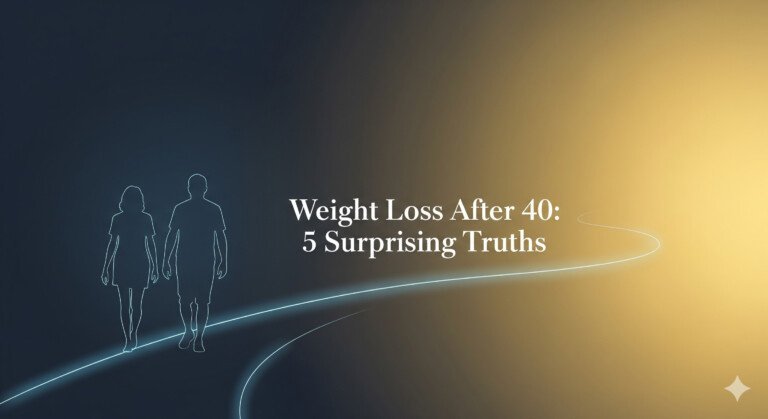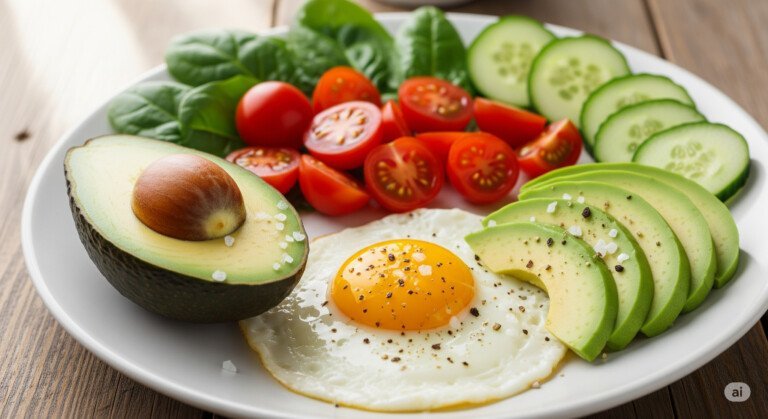Powerful Strength Training for Fat Loss: 7 Secrets You Need Now
For years, we’ve been told the same story: if you want to lose weight, you need to pound the pavement, sweat it out on an elliptical, or spend hours on a treadmill. The mantra was “cardio is king.” And while cardio certainly has its place, the real secret weapon that’s been hiding in plain sight is strength training for fat loss.
Thank you for reading this post, don't forget to subscribe!This isn’t about getting massive and bulky; it’s about transforming your body’s engine into a fat-burning machine. If you’ve ever felt stuck on a cardio-only plateau, or if you’re a complete beginner who’s intimidated by the weight room, this is your complete guide to understanding how resistance training is the key to unlocking a leaner, more energetic you.
Why Strength Training for Fat Loss Works Differently
Thinking of your body as a car, cardio is like burning fuel while you’re driving. It’s effective in the moment, burning calories as you move. Strength training for fat loss, however, is like upgrading your engine to be more efficient all the time. Here’s how it flips the script on traditional weight loss.
- The Afterburn Effect (EPOC): This is the biggest reason why lifting weights is so effective. When you perform intense resistance training, your body uses a huge amount of energy to repair and rebuild the muscle fibers you’ve challenged. This process, known as Excess Post-exercise Oxygen Consumption (EPOC), keeps your metabolism elevated and burning calories for hours—and even days—after you’ve left the gym.
- More Muscle, More Metabolism: Muscle tissue is metabolically active, which means it burns calories at rest, unlike fat tissue. The more muscle you have, the higher your resting metabolic rate (RMR) will be. By building muscle through strength training for fat loss, you’re essentially increasing the baseline number of calories your body burns every single day, even when you’re sleeping on the couch.
- Improved Body Composition: While a scale might not show a huge drop overnight (because muscle is denser than fat), what you’ll notice is a significant change in your body shape. Your clothes will fit differently, your waist will slim down, and you’ll look and feel leaner. This is the true goal of a fitness journey—not just weight loss, but fat loss.
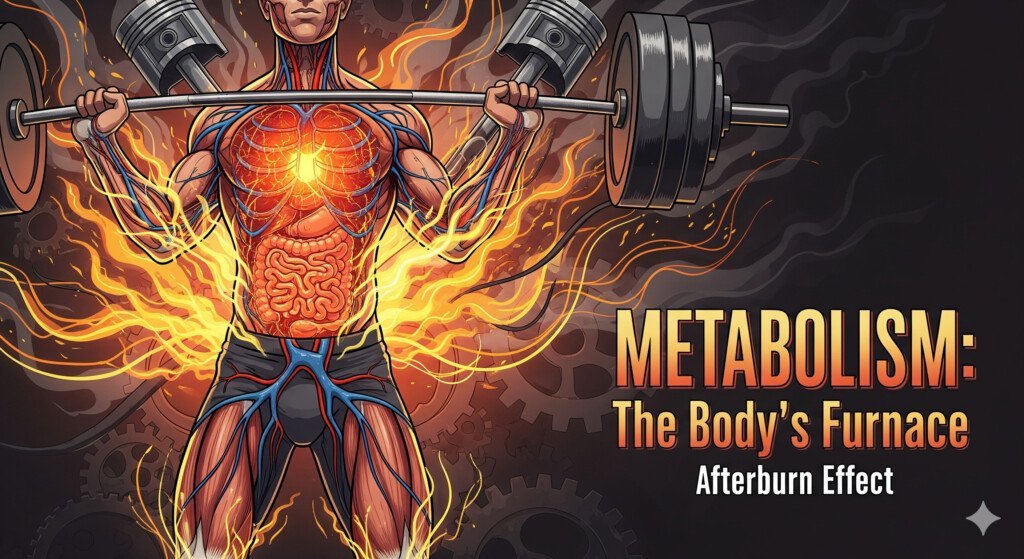
Debunking the Myth: Does Lifting Burn Fat?
This is one of the most common questions out there, and the answer is both “yes” and “no.” During a lifting session, your body primarily uses stored carbohydrates (glycogen) for energy, not fat directly. The true magic happens after the workout.
As we discussed, the EPOC effect turns your body into a metabolic furnace. The energy needed to repair muscle damage comes from a variety of sources, including fat stores. So, while you might not be directly burning fat during your squats, you’re creating the conditions for your body to torch it for the next 24-48 hours. This is the fundamental difference between strength training for fat loss and cardio. Cardio burns fat during the session; lifting burns fat for long after.
Strength vs Cardio Weight Loss: A Friendly Competition
It’s not about choosing one over the other; it’s about understanding how they work together. If you’re looking for quick calorie burn and immediate results on the scale, cardio has a slight edge. An hour on a bike can burn hundreds of calories. However, if your goal is sustainable, long-term fat loss and a complete body transformation, strength training for fat loss wins by a landslide.
Think of it this way:
- Cardio: Great for heart health, endurance, and burning calories while you’re doing it.
- Strength Training: Builds muscle, boosts metabolism, reshapes your body, and burns fat around the clock.
The most effective strategy combines both. Start with strength training to deplete your glycogen stores and create a powerful metabolic stimulus, then finish with a short burst of high-intensity cardio (like a 10-15 minute HIIT session) to tap into fat reserves.

Creating a Smart Strength Training Plan for Weight Loss
A successful program isn’t about aimlessly wandering around the gym; it’s about a structured, progressive plan. A solid strength training plan for weight loss should focus on compound movements, proper frequency, and smart progression.
1. Frequency: Aim for 3-4 days of lifting per week. This gives your body enough time to recover and rebuild muscle.
2. Compound Exercises: These are multi-joint movements that work several muscle groups at once. They burn the most calories and provide the biggest metabolic boost.
- Lower Body: Squats, deadlifts, lunges, hip thrusts.
- Upper Body: Push-ups, overhead press, rows, pull-ups.
- Full Body: Burpees, kettlebell swings.
3. Reps and Sets: For fat loss and muscle retention, aim for 3-4 sets of 8-12 repetitions for each exercise. This is a sweet spot for building muscle without excessive fatigue.
4. Progressive Overload: The key to seeing results. You must constantly challenge your muscles by gradually increasing the weight, reps, or sets over time. If you’re not getting stronger, you’re not growing, and you’re not maximizing your fat loss potential.
For those looking to accelerate their results, a pre-workout supplement can be a valuable tool to help you push through plateaus and maintain focus during your lifts. Blended into your routine, it can provide the extra energy you need for those challenging sets.

A Beginner Strength Training Plan for Weight Loss
This sample routine is designed for anyone new to lifting, focusing on form and a full-body approach. Do this 3 times a week, with at least one rest day in between.
- Warm-Up (5-10 minutes): Light cardio (jogging, jump rope) and dynamic stretches (arm circles, leg swings).
- Workout (45-60 minutes):
- Squats: 3 sets of 10-12 reps
- Dumbbell Rows: 3 sets of 10-12 reps per arm
- Push-ups (on knees or toes): 3 sets to failure
- Overhead Press: 3 sets of 10-12 reps
- Lunges: 3 sets of 10-12 reps per leg
- Plank: 3 sets, hold for 30-60 seconds
As you get stronger, you’ll feel the need to use a slightly heavier weight. This is how you’ll continue to see results. Remember that consistency is more important than intensity when you’re just starting out.
Fueling Your Body for Resistance Training Fat Loss
Your workout is only half the battle. What you eat and how you recover are just as crucial for a successful resistance training fat loss journey.
- Protein is Your Best Friend: Protein is essential for repairing muscle tissue and keeping you feeling full. Aim for around 1 gram of protein per pound of body weight per day. A high-quality protein powder is an easy way to meet your daily needs, especially on busy days or immediately after a workout.
- Carbs Aren’t the Enemy: Carbs provide the energy for your workouts. Focus on complex carbohydrates like oats, brown rice, and sweet potatoes, which provide sustained energy without a sugar crash.
- Healthy Fats: Fats are crucial for hormone production and overall health. Think avocados, nuts, and olive oil.
- Hydration: Water is a key player in metabolism and fat loss. Make sure you’re drinking plenty throughout the day.
- The Calorie Deficit: At the end of the day, you must be in a calorie deficit to lose fat. This means you need to burn more calories than you consume. Strength training for fat loss makes this process so much easier by boosting your metabolic rate, allowing you to eat a little more while still losing weight.
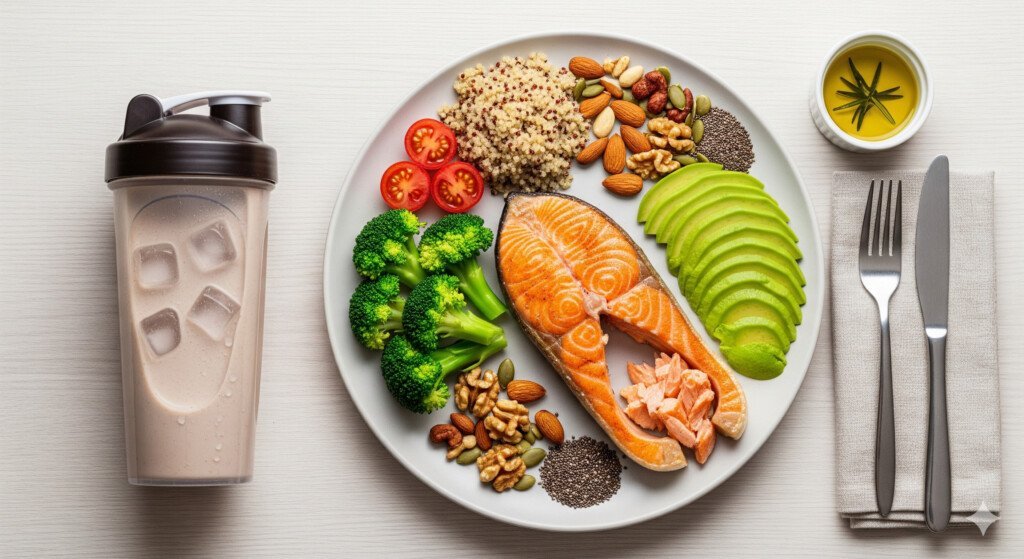
Top Mistakes Beginners Make with Strength Training for Weight Loss
- Ignoring Form: Lifting too heavy too soon without focusing on proper form can lead to injury and a less effective workout. Start with lighter weights and nail down your technique before you increase the load.
- Not Eating Enough Protein: Without sufficient protein, your body can’t rebuild the muscle you’ve worked so hard for, which can stall your progress.
- Obsessing Over the Scale: The scale can be misleading. As you build muscle and lose fat, your weight might not change much, but your body composition will be completely different. Take progress photos and measurements to track your real transformation.
- Skipping Rest Days: Recovery is when muscle growth and repair happen. Pushing yourself every single day can lead to overtraining, burnout, and injury.
- Neglecting Nutrition: You can’t out-train a bad diet. What you put into your body is the single most important factor for fat loss.
Conclusion
Moving beyond the myth that cardio is the only way to lose weight is a game-changer. The truth is, incorporating strength training for fat loss into your routine is the most sustainable, effective, and transformative way to achieve a leaner physique. It’s not just about what you do in the gym; it’s about building a body that burns calories efficiently all day long.
Start with a smart plan, focus on form, fuel your body with proper nutrition, and be consistent. You’ll not only shed fat, but you’ll feel stronger, more confident, and more capable than ever before.
Frequently Asked Questions (FAQ)
1: Will I get bulky from lifting weights? (Especially for women)
This is a very common concern, but the short answer is no. Women have significantly lower levels of testosterone compared to men, which is the primary hormone responsible for large muscle growth. Instead of getting bulky, you will develop a lean, toned, and strong physique. The bulky look comes from a combination of specific, high-volume training and a very high-calorie diet, which is not what you need for strength training for fat loss.
2: How often should I lift to lose fat?
A good starting point is 3-4 days per week. This provides enough stimulus to build and maintain muscle while allowing your body adequate time to recover. Spacing your lifting sessions with rest days or active recovery (like walking) is key.
3: Do I need to do cardio too?
While not strictly necessary for fat loss, combining cardio and strength training for fat loss is a highly effective strategy. Cardio improves heart health and endurance, and when used strategically (like a short HIIT session after lifting), it can enhance fat burning.
4: What’s the best time to lift for fat loss?
The best time to lift is whenever you can be consistent. Whether it’s in the morning, during your lunch break, or after work, the key is to find a time that works for your schedule so you can stick with it long-term.
5: How long until I see results?
You can expect to start feeling a difference in your energy levels and strength within the first 2-4 weeks. Visible body composition changes typically become noticeable around the 6-8 week mark, especially if you’re consistent with both your training and nutrition. Remember to take progress photos and measurements to track your journey, as the scale may not tell the full story.
Disclaimer:
This post may contain affiliate links. If you purchase through them, we may earn a small commission at no extra cost to you. Also, this content is for informational purposes only and does not substitute professional medical advice.





